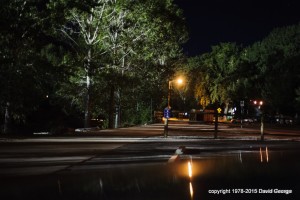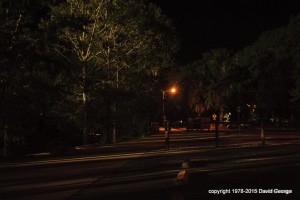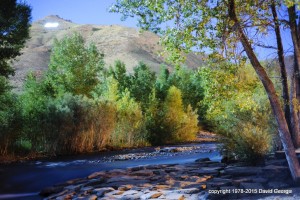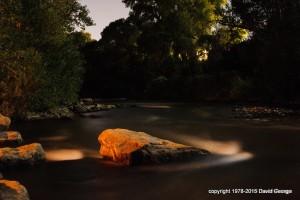I am including in this article a short bit of information concerning shooting long nighttime images. This will include shots of a local park well after dark in Colorado. The images were shot using a Nikon D700, a couple of different lenses, a good tripod when I used one and a Nikon cable release. I shot them different ways to try and cover the most common shooting situations you might encounter. The images will have shooting EXIF information listed on them if that is still an option here.
When shooting in a public area you need to make sure what the rules are for that area. These shots were taken well after the normal closing time for the park. I have a good relationship with the police who monitor that area. They let me shoot in there on occasion without any grief. If you are not known around the area and you have not discussed the shoot with the group who monitors the area be it police or park rangers you might have a visit. Be nice and explain what you are doing. I have never had to leave without getting a few shots. They might stay in the area to monitor you. I even asked a ranger to turn off his headlights to keep from interfering with the shoot. He did so without a question. I have even given some of them lessons or instructions on how to shoot the type of shots I was doing. Just remember, they are people also and have a job to do. If you work with them and respect them you will most likely get the same in return.
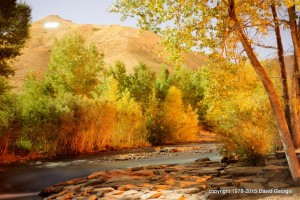
Something to consider when doing outdoor night shooting is the changing of the guard as far as street and parking area lights. Many cities are going to LED lights and many others are going to HPS (high pressure sodium) lights because of the cost savings. The question about the black bands across some images is the recycle rate for the ballast in some lights. It is the same effect that happens when you take a picture of a computer screen or TV screen. It can be compensated for but the new lights will be removing that issue so I consider it a moot point for now. If you need help with it email me direct.
There are many articles about how to compensate for shooting under HPS lights as they are very orange but that can be used to your benefit. I have included shots where it helps and shots where I shot to remove it. I think you will see it can be easily dealt with if you shoot RAW. The old coffee filter trick for setting white balance will work if you have an older camera and cannot shoot RAW. Again that is available all over the net but I do not use that method.
You will see shots 2696 and 2715 that were shot using the hood of my jeep as a rest for the camera. It is called improvising and you need to get good at it. All the other shots posted were shot using a tripod with a cable release. The time and location of the camera with the parking lot lights are critical as many of the lights here are HPS and that can create an affect you do not want. I have included shots done with WB on cloudy or shade and their counterparts being done in tungsten.
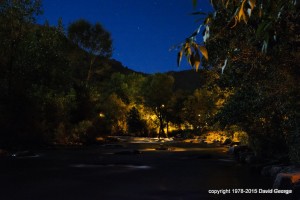
I waited on a couple of shots until the HPS lights started to dim down as it was getting very late or early depending on your view. This allowed for more control of the image. I shot the one off the Jeep hood using Auto WB which is something I rarely do. It was a test and the camera passed with flying colors. You need to experiment with your own equipment to get the results you want to get. Many times you will find a solution better suited for your desires than something you will find on the net.
